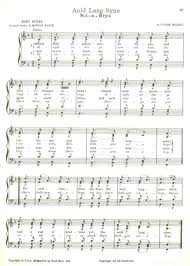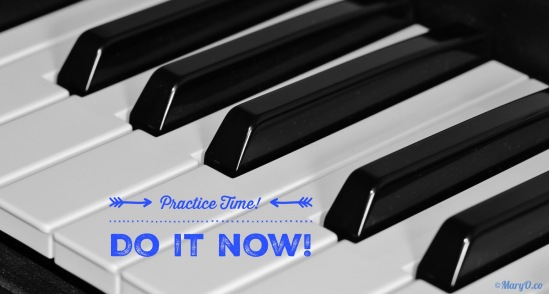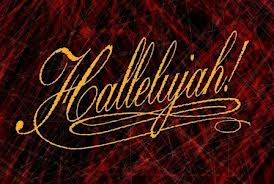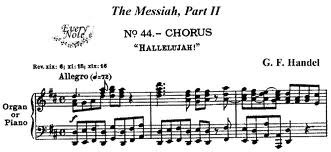Christmas Music Conclusion: Auld Lang Syne
Sunday, December 31, 2017 by Mary O'Connor | holiday
"Auld Lang Syne" is a Scots poem written by Robert Burns in 1788 and set to the tune of a traditional folk song. It is well known in many countries, especially in the English-speaking world; its traditional use being to celebrate the start of the New Year at the stroke of midnight. By extension, it is also sung at funerals, graduations and as a farewell or ending to other occasions. The international Boy Scout youth movement, in many countries, uses it as a close to jamborees and other functions.
The song's Scots title may be translated into English literally as "old long
Auld Lang Syne is one of Scotland's gifts to the world, recalling the love and kindness of days gone by, but in the communion of taking our
It is one of the many folk songs from the great Lowland Scots tradition collected and fashioned by the pen of one of the world's greatest songwriters. Burns devoted the last years of his life to the song tradition, and often a mere fragment from some old ballad was transformed by his alchemy into a memorable love song or Scots poem. With Auld Lang Syne, though, the brilliance was already there; this is
"... Light be the turf on the breast of the heaven inspired Poet who composed this glorious fragment."
One of the most interesting facts is that the Auld Lang Syne tune which is sung from Times Square to
"... is not the Scots phrase, 'Auld Lang Syne', exceedingly expressive - there is an old song and tune which has often thrilled thro' my soul".
Fancy singing along yourself? Here are the verses of the words to Auld Lang Syne:
Should auld acquaintance
And never brought to mind?
Should auld acquaintance
And auld lang syne.
Chorus:
For auld lang syne, my jo,
For auld lang syne,
We'll
For auld lang syne,
And surely
And surely I'll be mine!
And we'll
For auld lang syne.
Chorus
We
And
But
Sin auld lang syne.
Chorus
We
But seas between us braid
Sin auld lang syne.
Chorus
And there's a hand, my trusty
And
And we'll
For auld lang syne.
Chorus
Should old acquaintance
And never brought to mind?
Should old acquaintance
And long, long ago.
Chorus
And for long, long ago, my dear
For long, long ago,
We'll take a cup of kindness yet,
For long, long ago
And surely
And surely I'll buy mine!
And we'll take a cup of kindness yet,
For long, long ago.
Chorus
We two have run about the hills
And pulled the daisies fine;
But we've wandered
Since long, long ago.
Chorus
We two have paddled in the stream,
From morning sun till dine;
But seas between us broad have roared
Since long, long ago.
Chorus
And there's a hand, my trusty friend!
And give us a hand of yours!
And we'll take a deep draught of good-will
For long, long ago.
Chorus
Here is an old kinescope from over 50 years ago!! For 100 years, the slow drop of a lighted glass ball on New Year's Eve from atop One Times Square in New York City has become an American tradition. A huge crowd gathers every year to welcome in the New Year.
Beginning in 1956, Guy Lombardo & His Royal Canadians entertained the US on New Year's Eve with a combination of music and the live "ball drop" at Midnight. Guy continued this tradition until his death in 1977. His band still played on at CBS Television
If you look closely, you'll see acerbic television personality Henry Morgan in the crowd.
I hope you'll enjoy ringing in the New Year - 1958! Recorded: December 31, 1957
Auld Lang Syne played on bagpipes (as it should be)
This is from the 2015 Edinburgh Tattoo which we attended:
It's a Holiday But...
Tuesday, December 26, 2017 by Mary O'Connor | pianists
There's always time to practice :)
NO excuses
Christmas Music: Hallelujah Chorus
Monday, December 25, 2017 by Mary O'Connor | holiday
Messiah (HWV 56) is an English-language oratorio composed in 1741 by George Frideric Handel, with a scriptural text compiled by Charles Jennens from the King James Bible, and from the Psalms. It was first performed in Dublin on 13 April
Part II of the Messiah covers the Passion, death, resurrection, ascension, and the later spreading of the
The Mormon Tabernacle Choir sings the classical and beloved Hallelujah Chorus from Handel's Messiah.
And also on Nov.13 2010 unsuspecting shoppers got a big surprise while enjoying their lunch. Over 100 participants in this awesome Christmas Flash Mob.






